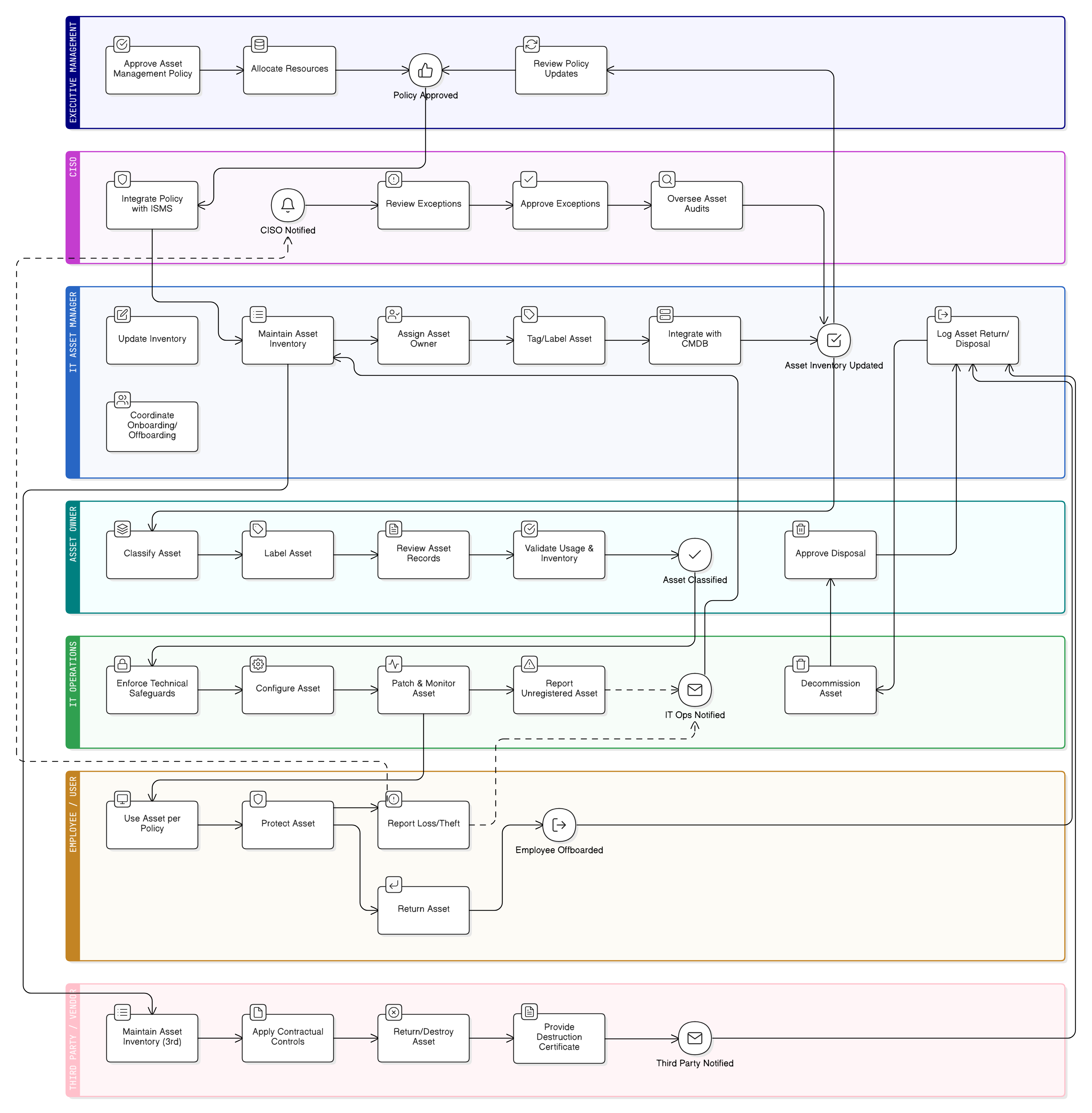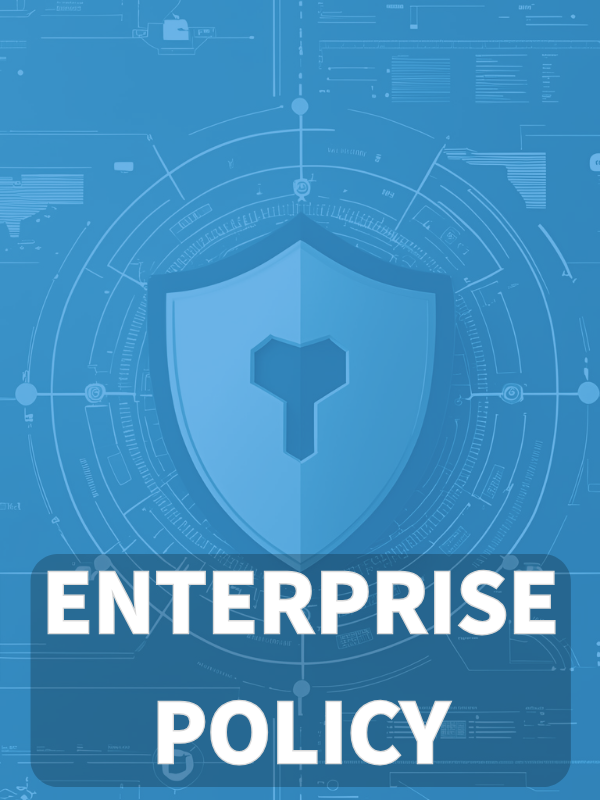Overview
The Asset Management Policy (P12) sets requirements for identifying, classifying, inventorying, and protecting organizational assets throughout their lifecycle, ensuring compliance, ownership, and security from onboarding to disposal.
Centralized Asset Inventory
Mandates a complete, auditable inventory of all physical, digital, and cloud-based assets.
Ownership & Classification
Defines asset owners and classification for protection and regulatory alignment.
Secure Lifecycle Controls
Details asset handling, from acquisition to secure disposal, supporting compliance and risk management.
Enforcement & Auditability
Enables policy enforcement, internal/external audits, and evidence retention for regulatory needs.
Read Full Overview
Policy Diagram

Click diagram to view full size
What's Inside
Scope and Rules of Engagement
Asset Inventory and Metadata Requirements
Asset Classification and Labeling Procedures
Asset Lifecycle (Onboarding, Return, Disposal)
Third-Party and Remote Asset Governance
Audit and Incident Response Integration
Framework Compliance
🛡️ Supported Standards & Frameworks
This product is aligned with the following compliance frameworks, with detailed clause and control mappings.
| Framework | Covered Clauses / Controls |
|---|---|
| ISO/IEC 27001:2022 | |
| ISO/IEC 27002:2022 | |
| NIST SP 800-53 Rev.5 | |
| EU GDPR |
Article 30Article 32
|
| EU NIS2 | |
| EU DORA | |
| COBIT 2019 |
Related Policies
Access Control Policy
Ensures asset visibility aligns with access entitlements and control mechanisms across systems and data environments.
Onboarding And Termination Policy
Governs timely provisioning and return of physical and logical assets during staff transitions.
Data Classification And Labeling Policy
Establishes mandatory classification rules for assets, which dictate labeling, handling, and disposal procedures.
Data Retention And Disposal Policy
Defines the secure disposal timeline and methods for digital and physical information-bearing assets.
Logging And Monitoring Policy
Enables traceability of asset access and usage through system logging, endpoint visibility, and behavioral analytics.
Incident Response Policy
Supports rapid containment and investigation of asset-related breaches, such as lost laptops or untracked storage media.
About Clarysec Policies - Asset Management Policy
Effective security governance requires more than just words; it demands clarity, accountability, and a structure that scales with your organization. Generic templates often fail, creating ambiguity with long paragraphs and undefined roles. This policy is engineered to be the operational backbone of your security program. We assign responsibilities to the specific roles found in a modern enterprise, including the CISO, IT Security, and relevant committees, ensuring clear accountability. Every requirement is a uniquely numbered clause (e.g., 5.1.1, 5.1.2). This atomic structure makes the policy easy to implement, audit against specific controls, and safely customize without affecting document integrity, transforming it from a static document into a dynamic, actionable framework.
Third-Party Asset Governance
Requires vendors to maintain inventories and enforce equivalent asset tracking, labeling, and disposal standards through contracts.
Shadow IT & Exception Controls
Implements network scanning and exception logging to detect unauthorized or unmanaged assets and formally treat risk scenarios.
Integrated Risk Management
Links asset inventories to risk registers and business impact assessments for targeted threat modeling and compliance.
Frequently Asked Questions
Built for Leaders, By Leaders
This policy was authored by a security leader with 25+ years of experience deploying and auditing ISMS frameworks for global enterprises. It's designed not just to be a document, but a defensible framework that stands up to auditor scrutiny.
